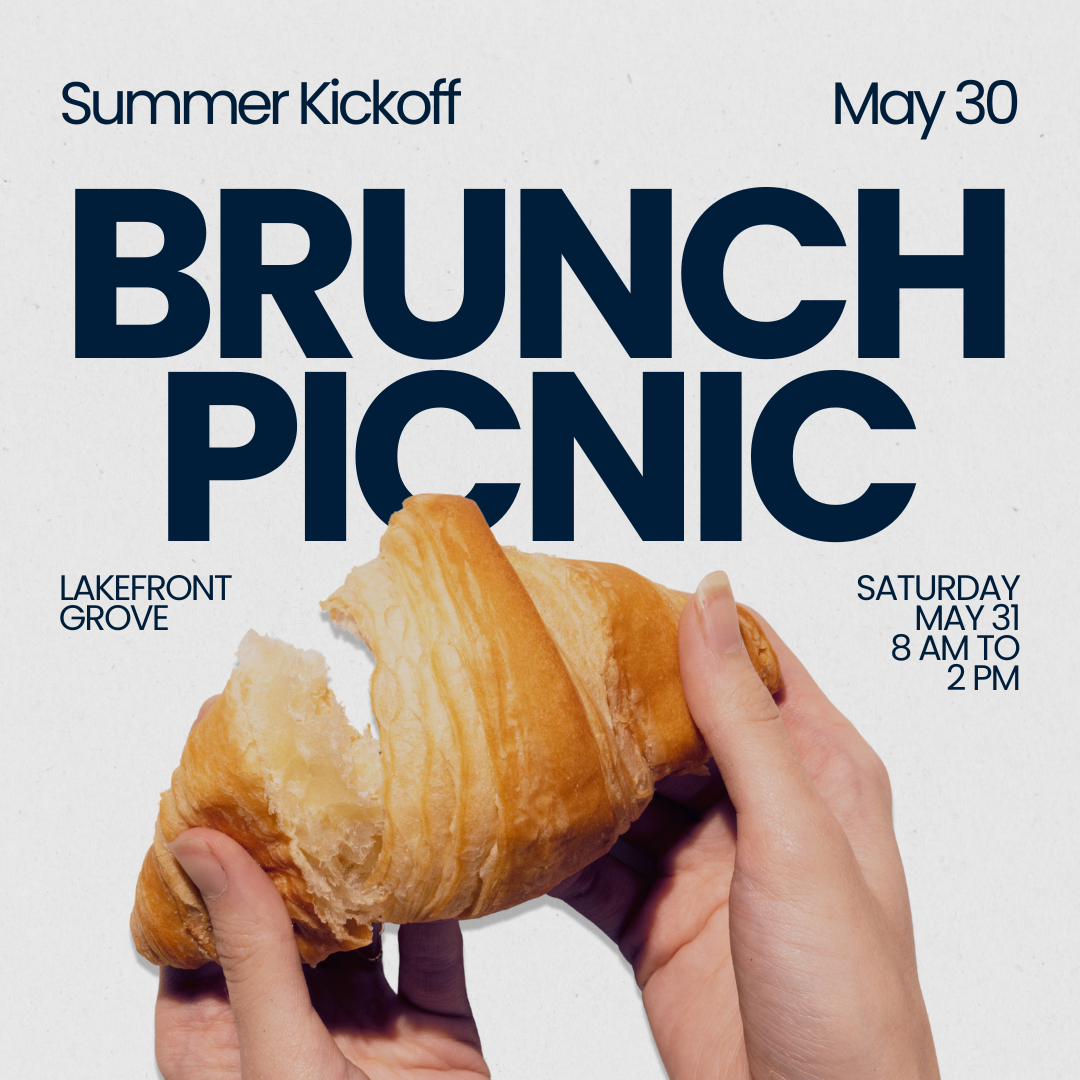Mastering Social Media for Clubs: Go Beyond Likes and Shares
Social media provides a platform for direct communication between your members, prospects, employees, and admirers. Most clubs use their average...
Many private clubs want to do more with social media but run into roadblocks. For membership directors and general managers balancing dozens of priorities, it’s not always clear how to make social media fit into an already packed schedule. Even when the value is understood, the time, staff, or strategy to execute often just isn’t there. But with the right approach, social media can become one of the most effective tools for building member loyalty and attracting new prospects—without requiring a full-time effort.
A strong social media strategy keeps members informed, showcases club events and amenities, and makes your club more discoverable to potential members. Instead of relying solely on word-of-mouth, you can use platforms like Facebook, Instagram, and LinkedIn to highlight the best parts of club life, from exclusive events to member success stories.
For many prospective members, your online presence is their first impression of your club. A well-maintained social media page helps show your club’s prestige and welcoming community, making it easier for potential members to see themselves as part of it. Plus, consistent engagement builds loyalty among existing members, making them more likely to stay involved.
Most importantly, this doesn’t have to be a full-time job. It only takes a few hours each month to schedule posts and interact with members, but that time can have a big impact. Tools like automated scheduling and private member groups make it even easier to manage. Social media is about showing up, being authentic and approachable, and making members feel connected and valued.
Start by considering what kind of time you can realistically dedicate to social media. Maybe you can set aside a few hours at the beginning of each month to plan and schedule posts, or perhaps it works better to carve out small blocks of time throughout the week.
Even dedicating just 2–3 hours a month can make a noticeable difference. With that time, many clubs find they can schedule around ten posts—enough to maintain a consistent, engaging presence that keeps members informed and helps grow interest from potential prospects. The key is consistency. A steady cadence of updates signals that your club is active, engaged, and proud to share what’s happening within the community.
Your club doesn’t need to be on every social platform. Focus on the ones where your members are most active. For clubs with members aged 50-60 and incomes above 100k a year, focus on Facebook, Instagram, and LinkedIn. Here’s how each platform can serve your club:
LinkedIn may not seem like an obvious choice for private clubs, but it’s one of the best platforms for attracting prospective members and engaging existing ones.
The Country Club in Brookline, MA, uses LinkedIn to share job postings, employee highlights, and industry achievements. These posts help reach potential hires while reinforcing the club’s credibility and reputation. Members can interact with these posts, embracing the club’s accomplishments as their own.
If your club has a blog, LinkedIn is an excellent place to share articles and drive traffic to your website.
Facebook and Instagram are two of the most effective platforms for private clubs to build community and connect with both current and prospective members. Many clubs use private member-only Facebook groups or Instagram close friends lists to share timely updates, event photos, and behind-the-scenes content. This kind of exclusive access helps reinforce a sense of belonging and keeps members engaged beyond the walls of the club.
Public-facing accounts, on the other hand, can be powerful tools for recruitment. These pages give prospective members a window into club life—from vibrant social events to staff spotlights and member experiences. Sharing real member stories, highlighting testimonials, or featuring a “Day in the Life” at the club can help new prospects envision themselves in the community. Clubs can also use these platforms to answer common questions, promote upcoming open houses or prospective member events, and create touch points that invite casual conversation with those considering membership.
For clubs that host weddings or private events, a strong visual presence on Instagram is especially valuable. According to the Engage Luxury and Event Conference, couples typically scan the first nine posts on a venue’s Instagram profile before deciding if it’s worth pursuing. Curating high-quality wedding content—ceremony setups, bridal party moments, reception spaces—can help position your club as a top-tier venue option and create another entry point for future members.
While platforms like Facebook, Instagram, and LinkedIn are effective for private clubs, other social media apps may serve a niche purpose. However, the return on investment (ROI) is often lower, so these platforms should only be used if they align with your club’s goals and available resources.
Although the typical private club audience isn’t active on X (formerly Twitter) or Bluesky, these platforms can still be helpful for real-time updates, industry networking, and a broader digital presence. However, given the data on user demographics and engagement rates, the return on investment (ROI) for these platforms may not be as high as that of others like Facebook and Instagram.
If your club decides to use X or Bluesky, consider sharing event updates, club announcements, and relevant industry news. These platforms work best when clubs engage in conversations, reply to comments, and interact with influencers or relevant industry figures. While direct membership recruitment may be less effective here, maintaining a presence can still help with brand credibility and online visibility.
TikTok is rapidly growing as a major social media platform, particularly among younger audiences. Even for clubs that cater to older audiences, maintaining a presence on TikTok can help engage younger family members, potential junior members, and the broader community.
However, the ROI for private clubs on TikTok may not be as strong as on platforms like Facebook or LinkedIn. TikTok thrives on highly engaging, short-form video content, so clubs that can create visually appealing videos—such as event highlights, member testimonials, or behind-the-scenes club tours—may find success.
To make the most of TikTok, focus on storytelling, trends, and entertainment-driven content rather than traditional marketing posts. A well-curated presence on TikTok can enhance brand awareness and reach a different audience segment. A dedicated and highly engaged TikTok user on your team can help maximize success.
YouTube is the second-largest search engine in the world and a great platform for clubs that have the resources to create impactful video content. YouTube can be useful for showcasing club amenities, hosting virtual tours, highlighting events, or sharing member testimonials. Since videos have high SEO potential and long-term benefits, this platform has higher value compared to other fast-moving social media channels.
Reddit is an online forum where anonymous users converse over countless topics. With over 500 million users, about 46% are under the age of 29. Private clubs can use Reddit to monitor discussions about the industry, gain insights into potential members, or even participate in conversations in golf, hospitality, or regional groups. While it can be a valuable listening tool, clubs should proceed with caution—conversations on Reddit are largely out of your control, and direct promotion is often not well received.
Snapchat is an instant messaging app focused on temporary photo and video sharing. Most its users are between 18 and 24, making it more useful for engaging younger members or children of current members. Clubs can use Snapchat’s location-based filters and lenses to brand their events or encourage members to share club experiences. The app also offers paid advertising and community stories, which could provide additional exposure. While it’s not a must-have platform, it could be useful for clubs looking to appeal to a younger audience.
Pinterest is a highly visual platform where users create collections and boards. Of its 450 million users, nearly 70% are female, and most use it for fashion, recipes, or aesthetic inspiration. Pinterest allows clubs to upload and share high-quality images that showcase the club’s beauty, amenities, or events. Since Pinterest allows clickable links, clubs can direct viewers to their websites, making it an easy and low-maintenance touchpoint for exposure. In their business portal, you can analyze audience insights and learn more about the audience you’re reaching.
Your club’s event calendar is your best tool when planning social media content. At the start of each month, review your club’s upcoming events and outline a posting schedule. Spreadsheets, digital documents, or project management tools can help track your social content.
Beyond event updates, clubs can highlight job openings to attract talent, introduce new hires, recap past events with images, and feature website updates such as blogs, event sign-ups, or club news. A structured calendar ensures a steady stream of content without last-minute scrambling.
Simply add the topics you want to post to the calendar and include your captions, story post ideas, and graphics if desired. Use whatever organizational plan works best for your club.
Good social content is driven by engaging, captivating visuals. But you don’t need a degree in graphic design to create stunning imagery.
For those with the capacity, free and user-friendly tools like Canva or Adobe Express can help create engaging graphics to elevate your posts. Templates make designing easy, and both platforms allow you to put brand assets into a saved kit with specific low-cost subscriptions.
If designing graphics isn’t feasible, try capturing and posting high-quality event photos. Every visual helps tell your club’s story.
Here are some examples of graphics your club could create:



Scheduling content in advance can also save significant time. Facebook, Instagram, and LinkedIn offer built-in features that allow posts to be scheduled ahead of time, reducing the need for daily management. If you're assembling multiple posts at once, using these native scheduling options can streamline your efforts. Instagram’s "Post to Facebook" feature further simplifies the process by allowing cross-posting. Scheduling at least two posts per week across all active platforms ensures consistency without requiring daily attention.
For a more hands-off approach, tools like HubSpot and Sprout Social enable clubs to schedule content in bulk and track post performance through analytics. These solutions provide an all-in-one hub for content planning and performance evaluation, making social media management more intuitive and efficient.
Once your club starts using social media consistently, it’s important to track its impact. Business accounts offer built-in analytics that reveal key insights about your audience—who you’re reaching, which posts are generating the most engagement, and what content resonates best. These insights can help guide future content decisions, ensuring your posts remain relevant and compelling. Regularly reviewing your performance is essential for growth and maintaining a strong connection with your community.
Did you know that consumers spend 40% more time with organizations that engage with them on social media? The more you interact with members online, the stronger their loyalty to your club will be
Instead of letting important updates get lost, create Instagram Story Highlights. If your club is undergoing renovations, for example, a “Renovations” highlight can keep members informed about progress. Other highlights could showcase club amenities, upcoming events, or past celebrations.
Engagement-driven features like polls, Q&A stickers, and countdowns help keep members informed and excited about upcoming events. Polls and Q&A stickers gather feedback and spark conversations, countdowns build anticipation, and link stickers drive traffic to event registrations or newsletters.
Setting up exclusive social media groups allows members to discuss governance topics, committee updates, or community events. These private groups enhance exclusivity while keeping communication seamless.
As members, prospects, and industry accounts interact with your posts, engage with them through comments and replies. According to Smart Insights, 21% of consumers prefer to message organizations on social media rather than calling them directly. By spending time nurturing relationships online, you’re providing them with another touch point for their membership journey.
Social media is an essential part of marketing and member engagement for private clubs. While each club can tailor its social media strategy based on available resources, the key takeaway is clear: participation is necessary. By implementing a strategic and efficient system for content creation and scheduling, clubs can stay visible, foster community connections, and attract new members without creating an overwhelming workload.

Social media provides a platform for direct communication between your members, prospects, employees, and admirers. Most clubs use their average...

2025 is here, and with the new year comes fresh opportunities—and fresh challenges—for private club marketing. Membership expectations are evolving,...

In a recent episode of the Crushing Club Marketing podcast, Ed spoke with Bret Gallaway, a change management and communications expert. Bret brings...